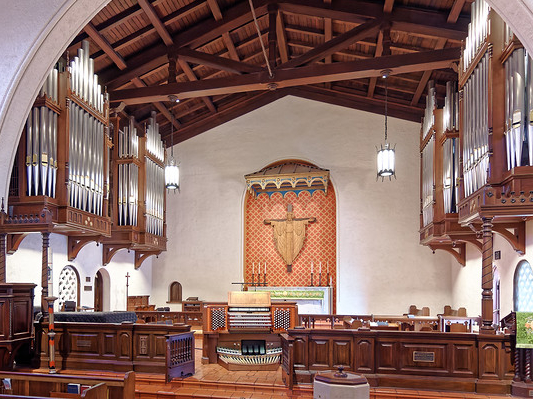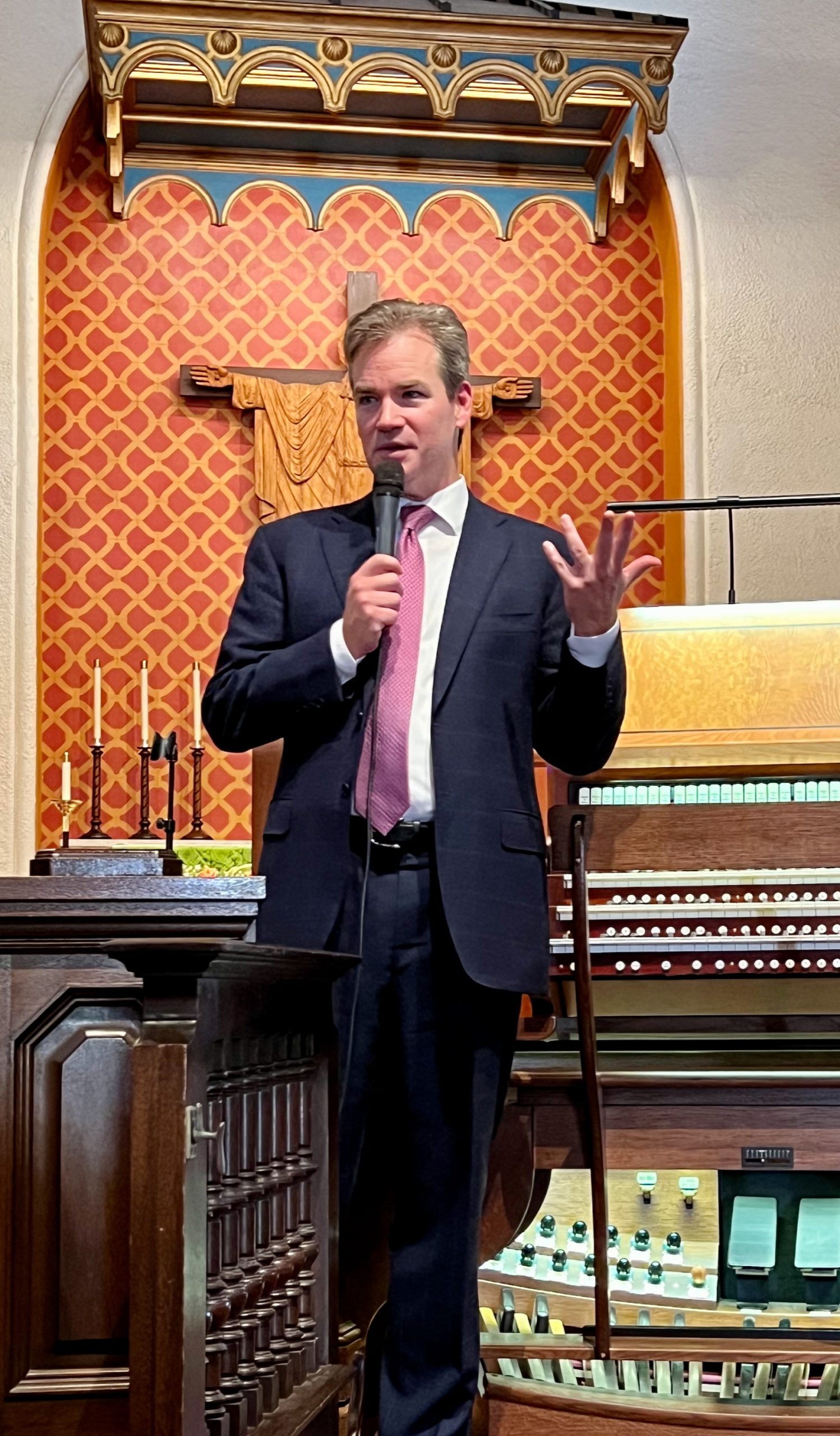Ken Cowan’s Virtuoso Recital Dedicates La Jolla’s New Rosales/Parsons Pipe Organ
La Jolla’s St. James by-the-Sea Episcopal Church is the proud owner of a recently installed 79-rank pipe organ built by two American firms: Rosales Organ Builders of Los Angeles and Parsons Pipe Organ Builders of Canandaigua, New York. For those unfamiliar with the niche market of pipe organ building, the Rosales/Parsons trademark carries the same cachet as Rolex and Ferrari in their respective fields.
To dedicate the new instrument, the church has announced a series of four different dedication musical events spread over the next year, and on Sunday, Ken Cowan played the series-opening Dedication Recital of the Rosales/Parsons Organ.An internationally acclaimed performer, Cowan is a coveted recitalist for both national and regional conventions of the American Guild of Organists, and he holds the position of Professor of Organ and head of the organ program at the Shepherd School of Music at Rice University in Houston, Texas.
Cowan has few peers as a recitalist, and his brilliantly executed, wide-ranging Sunday program again confirmed his empyrean status. He opened each half of his program with a touchstone work of the organ repertory: the bravura “Allegro” movement from Charles-Marie Widor’s Organ Symphony No. 6 and J. S. Bach’s concerto-inspired Prelude and Fugue in E Minor, BWV 548.
Each of these powerful works unfolded with Cowan’s breathtaking command and his lithe but unfailingly secure touch. The Bach and Widor revealed both the power and refinement of the new Rosales/Parsons instrument. The principal choruses—the heart of any well-designed organ—proved warm and generously scaled with a judicious amount of upper brilliance, a welcome attribute considering the modest acoustical support the St. James building affords. That the reeds add considerable power and definition to the organ’s ensemble without overpowering the principal choruses is a tribute to the finesse of the reeds’ voicing, the term organ builders use to describe the finishing sonic adjustment made on every pipe after the instrument is installed in its final acoustical setting.

St. James by-the-Sea Episcopal Church chancel: organ console and matching casework [photo (c.) Ron Belanger}
Cowan revealed his virtuoso credentials performing Variations on a Theme by Paganini by George Thalben-Ball, a respected but lesser-known 20th-century British organist-composer. Yes, the theme is from that familiar Paganini Caprice that violinists are always trotting out, but most of Thalben-Ball’s composition is played only by the organist’s two feet on the organ’s pedal division. Ninety-nine per cent of the time in organ literature, the pedal line functions as either the work’s straight-forward bass line or occasionally sounding out a snappy fugue subject. But Thalben-Ball has feet executing rapid figurations, playing busy intertwining contrapuntal lines, and even accomplishing dense chord progressions under the theme. I confess that I kept my eyes on Cowan’s hands to make certain that they were not secretly assisting with these complex textures, but for this virtuoso pedal extravaganza, all his hands did was occasionally change the registration. Towards the end of Thalben-Ball’s Variations, the composer does require the hands get busy and do their share of the heavy lifting to complete the variation cycle. But after hearing the amazing calisthenics Cowan’s two feet accomplished alone, the final variation with hands and feet together proved surprisingly anticlimactic.
Cowan’s own arrangement of Franz Liszt’s Mephisto Waltz No. 1, “The Dance in the Village Inn,” proved the perfect choice both to provide a thrilling finale to the recital and to display the organ’s wide array of solo colors as well as its bold, contrasting ensembles. Some sixty years ago, during yet another Baroque revival in North America spurred by Baroque-inspired mechanical action organs imported from Holland and West Germany, no respectable university organ teacher would assign orchestral transcriptions to promising organ students. They were considered as passé as the Charleston and silent movies starring Ramon Novarro. Times and tastes change, of course. Cowan’s formidable technical prowess vividly recreated Liszt’s orchestral drama with its quicksilver transformations on the responsive Rosales/Parsons organ, making the persuasive case for the once scorned orchestral transcription. Should any doubters have remained in the La Jolla church, for his encore Cowan offered another resplendent transcription: the cocky Rákóczi March by Hector Berlioz.
This recital was presented by La Jolla’s St. James by-the-Sea Episcopal Church on Sunday, October 1, 2023.

Ken Herman, a classically trained pianist and organist, has covered music for the San Diego Union, the Los Angeles Times’ San Diego Edition, and for sandiego.com. He has won numerous awards, including first place for Live Performance and Opera Reviews in the 2017, the 2018, and the 2019 Excellence in Journalism Awards competition held by the San Diego Press Club. A Chicago native, he came to San Diego to pursue a graduate degree and stayed.Read more…


Bravo!